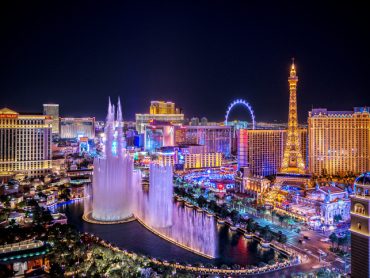Hotel Room ‘Hauling’
Have you heard of “hauling” or, to be a little more precise, a haul video? For those of you who aren’t wholly up to date on the latest Internet lingo, let me explain.
Used mostly for retail purposes, a haul video is when a person records what items they purchased from stores, displaying each as they are unpacked, and then posts it to the Internet, most likely YouTube. During the brief video, the purchaser might go over basic product details, prices and his or her own opinions of the goods. Although this trend has its roots in the “unboxing” of the latest high-tech gadgets, especially gaming consoles, it is now most popular amongst young women in the form of shopping hauls for cosmetics or fashion products. Given that haul videos are mostly unendorsed, they have an air of authenticity about them consumers trust.
Rest assured, this is not a fad; there are hundreds of thousands of haul videos on YouTube alone, and some have millions of views. My question today: why can’t you apply this to hotels?
Think about it. A haul video aims to capture initial impressions of a product immediately after it is purchased and unveiled without vendor supervision. These videos can be made for physical products you take home with you or products you temporarily occupy such as guestrooms. In fact, hotel room haul videos are already quite common, functioning as a personalized tour of the space instead of an unboxing. Realtors are also employing similar digital tactics to showcase the houses or apartments they are trying to sell.
The key aspect about haul videos is that consumers trust them. This faith stems in large part from the third-party nature of the recordings; the people who talk to the camera aren’t sponsored by the corporation that makes the featured product (at least, to the best of the public’s knowledge). But there’s another factor at work.
Unlike photos, it is very difficult to doctor a video because instead of dealing with one pixilated image, video is usually recorded at a minimum of 24 frames per second. In order to seamlessly mark up, say, a two-minute tour, someone would have to doctor roughly 2,880 images in addition to the corresponding audio. That’s a very meticulous and costly task that not many have the resources to accomplish. Hence, when someone or something is recorded, we believe it.
Imagine something like Room 77 (which lets you view hotel floor plans and view images from each room) where you can select individual guestrooms or suites and out pops an effusive manager to walk viewers through the various amenities that will be found when a guest arrives. That, or you might also link to hotel room haul videos already posted by past visitors. The key to selling rooms this way is to dig deep, going through as many details (furnishings, linens, the view, the TV, bathroom hygiene products and so on) as possible. Moreover, it is very important to have a host who talks to the camera and interacts with the room, thus bringing viewers into the experience and allowing them to feel like they were also there.
It’s a hefty amount of legwork to get this set up, but the payoffs are pretty hefty, too. A tour video for a guestroom gives viewers and potential buyers the reassurance they need about the product in question. After all, single images are easy to doctor, thus explaining why candid photography on social media can do much more to eliminate shopper trepidation than the fancy, staged pictures one might find on a brand.com. Videos exacerbate this effect, and their value can never be understated.
(Article published by Larry Mogelonsky in HOTELSmag on March 11, 2013)




